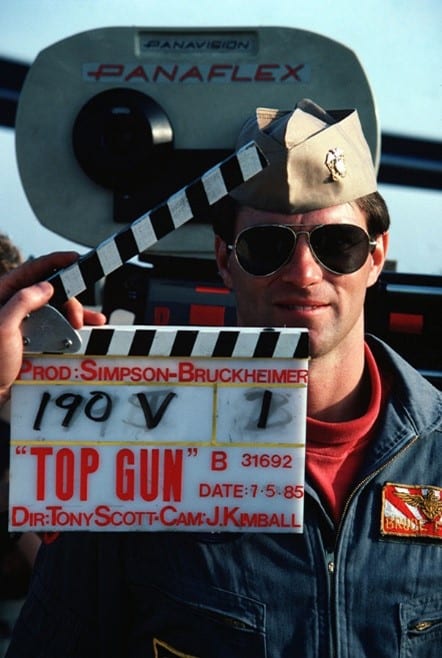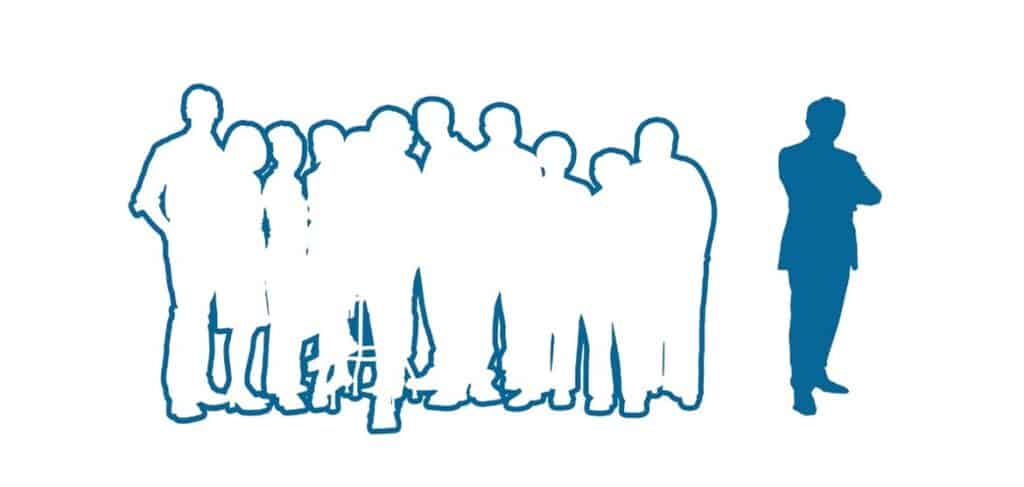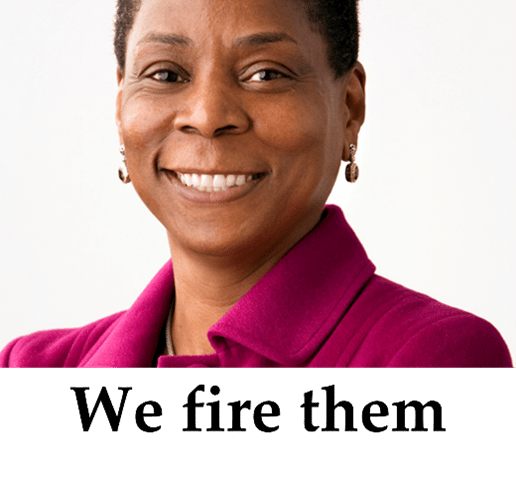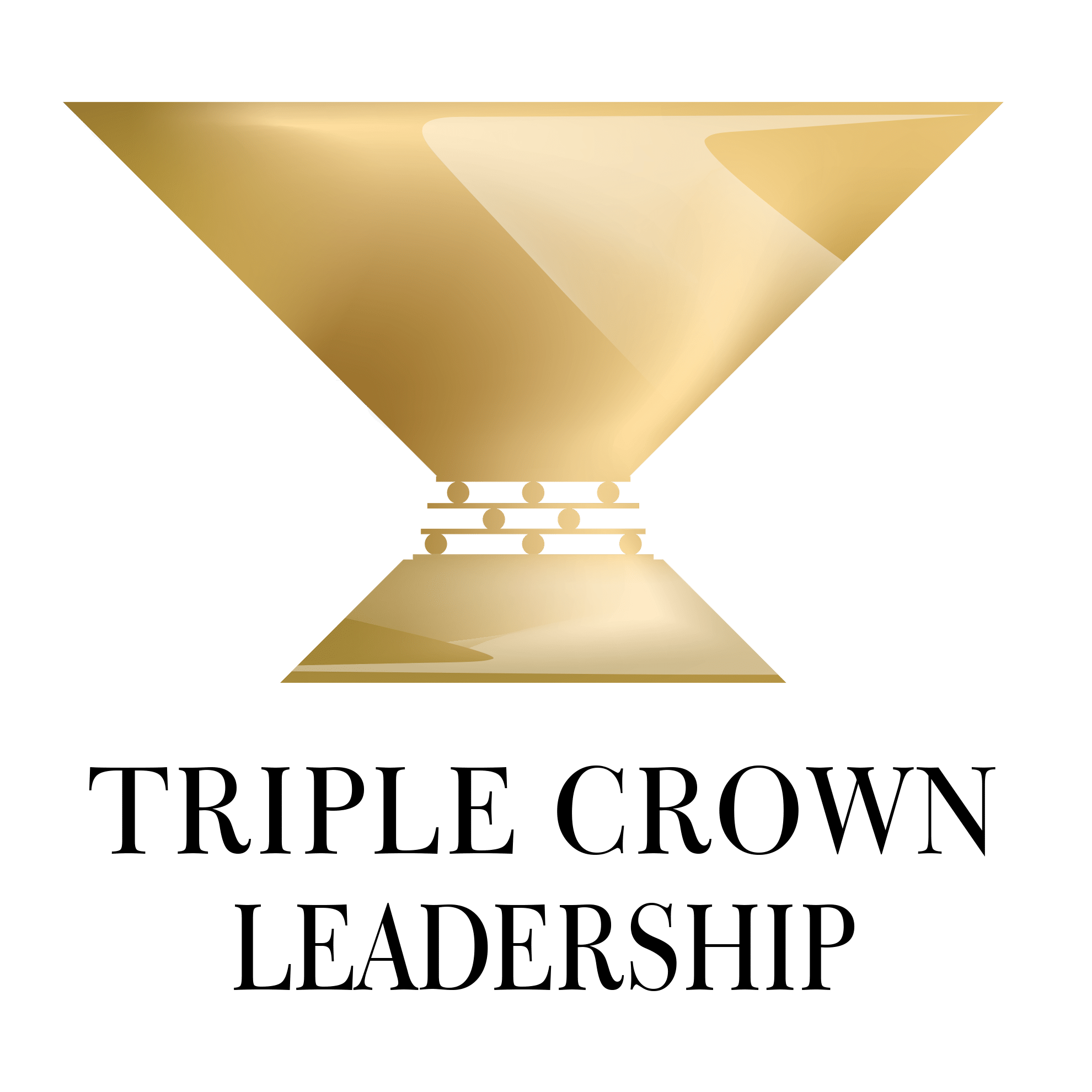Tom Cruise’s 2022 reprise of his 1986 hit movie, Top Gun, has been a box office smash. Top Gun: Maverick has Cruise again playing Pete “Maverick” Mitchell, a cocky, rule-breaking Navy test pilot. The elite naval aviation academy recruits Mitchell (Cruise) to train a group of younger top guns for a harrowing and almost-impossible aeronautical mission. It’s a great film.

How does this relate to leadership? It raises a critical but poorly understood aspect of organizations:
How to deal with mavericks?
The mavericks in your organization deserve your attention and protection even if they’re not top gun superstars. They can be the keys to fabulous success—but only if you abide by one inviolable caveat.
Mavericks
As we wrote in our book, Triple Crown Leadership, a maverick is an independent innovator or performer, often exceptional and quirky, who doesn’t run easily with others.
Mavericks don’t think or behave the same way as most people. They’re unconventional rule breakers who step out from the crowd and take a different path. And they delight in shaking things up.

Mavericks can be exceptional innovators, critical in our ultracompetitive world. Think of maverick entrepreneurs like Steve Jobs, Jeff Bezos, Oprah, Elon Musk, Richard Branson, Reed Hastings, Arianna Huffington, and Herb Kelleher. Consider social innovation mavericks and pioneers like Amelia Earhart, Rosa Parks, Malala from Pakistan, Greta Thunberg from Sweden, Billy Shore of Share Our Strength, and John Mackey of Whole Foods. Think of maverick geniuses like Galileo, Ada Lovelace, Albert Einstein, and Thomas Edison. Don’t forget cultural mavericks like Lady Gaga, Prince, and Trevor Noah.
“And those who were seen dancing were thought to be insane by those who couldn’t hear the music.”
-Friedrich Nietzsche
Of course, mavericks can be found beyond the ranks of entrepreneurs and celebrities. Many are found within organizations, fighting to bring innovation into organizational cultures that resist it.
Here’s the rub: mavericks don’t always get along well with others. With their quirky ways, strong wills, and high standards, they often create friction and conflict. They make others uncomfortable, and they bristle at systems and routines. As a result, they’re often marginalized, rejected by the corporate immune system or by colleagues who want harmony or consensus. Meanwhile, innovation fizzles.

Personal Values Exercise
Complete this exercise to identify your personal values. It will help you develop self-awareness, including clarity about what’s most important to you in life and work, and serve as a safe harbor for you to return to when things are tough.
Mavericks in Action
Look to a surprising example we discovered in our research for our book, Triple Crown Leadership: Mayo Clinic, founded in 1889. The Mayo network is a global leader in health care delivery, research, and education, with a sterling brand in health care. Patients from all corners of the globe journey to Mayo for treatment.
Mayo’s approach is both high-tech and high-touch, combining smart use of technology with old-fashioned customer service and attentive care.
Its rich history notwithstanding, Mayo isn’t looking for homogeneous candidates to recruit. It values what it calls “jarring individuals,” employees who question the status quo and shake things up. These Mayo mavericks—and the Clinic’s ability to protect them and leverage their talents—are essential to its enduring success.
Often in his career, Bob was a maverick. Twice he quit organizations he came to dislike without another job lined up. Why? To pursue his leadership dreams. He launched a controversial “Tiger Team” at a corporate subsidiary which led to the fabulous success of a new product (the “Pathfinder“—the world’s first handheld barcode printer), teeing up other bold actions at a corporate HQ. His turnaround success at two public companies also demanded maverick behavior.
Gregg has followed suit. He led a crack startup division that had to find innovative ways to start several new ventures under brutal time pressure. He’s also left an organization without another job lined up when he no longer felt aligned with its values and decisions. Instead of walking away quietly, he said his peace to the board before leaving. He “shot the moon” in several critical situations, and he took an unconventional path while teaching at a consortium, fighting to give students what was best for them instead of what the authorities wanted.
In our interviews for Triple Crown Leadership, Joe Mello, the COO of DaVita, told us, “You need mavericks. You should embrace them. They test the assumptions that you’re managing with … People see that it’s okay to have a dissenting opinion.”
The Importance of Diversity

Diversity of all types—from demographics to values, opinions, expertise, and experiences—is critical to the success of organizations.* People of color and of varying ages, genders, and lifestyles often have different life experiences and viewpoints. That diversity breaks the boundaries of conventional thinking and complacency.
Notably, there’s compelling research on the benefits of diversity (and its cousins: equity, inclusion, and belonging) when managed well. Here’s a summary from the esteemed Corporate Executive Board:
- “The bottom line … is that diversity is good for business. CEB research found that in a more diverse and inclusive workforce, individual discretionary effort improves by 12% and intent to stay improves by 20%.
- Team collaboration and commitment improve by about 50%.
- Working in an organization environment where divergent perspectives are valued makes employees want to work harder, stay longer, and be stronger team players.
- Diversity and inclusion aren’t just theoretically important, morally important, and legally important. Diverse and inclusive workforces drive outcomes that are important to the business.” (Source: Corporate Executive Board, “Creating Competitive Advantage through Workplace Diversity,” February 2016.)
Also, companies with “diverse knowledge domains are more likely to generate cutting-edge ideas and novel combinations of knowledge components.” (Source: Kevin Zheng Zhou and Caroline Bingxin Li, “How Knowledge Affects Radical Innovation,” Strategic Management Journal, 2012.)
“The future success of any organization relies on the ability to manage a diverse body of talent
that can bring innovative ideas, perspectives, and views to their work.”
– Ambreen Mushtaq, Najeeb Haider, and Muhammad Khan,
Journal of Business and Management Research
Unleashing other leaders throughout an organization is one of the prime responsibilities of leaders. That includes mavericks, in all their diversity.
But because mavericks are different, others may shun, criticize, mock, or even sabotage them. Some folks fear mavericks. Others envy them. You as a leader need to defend mavericks, praise their creativity and initiative, and encourage others to color outside the lines too.

Alignment Scorecard
When organizations aren’t aligned, it can reduce performance dramatically and cause frustration and dysfunction. With this Alignment Scorecard, you can assess your organization’s level of alignment and make plans for improving it.
How to Protect Your Mavericks
How can leaders protect mavericks? Here’s a punch list:
- Create and empower autonomous “rapid action teams” (or “skunk works”)–small cross-functional groups, trained and empowered with the resources and authority to launch pathbreaking new products
- Recognize mavericks and their contributions in meetings and other communications
- Provide mentoring and coaching for mavericks, helping them when they encounter roadblocks
- Intervene when dustups occur between mavericks and others, reframing to focus on the common goal instead of the personal dispute
- Create a culture that celebrates experimentation and pivots, and that allows or even welcomes failure (as an investment in learning and discovery)
- Personally engage in innovation projects to show top-level commitment
But there’s one essential caution you cannot ignore.
The Crucial Caveat
The job of the triple crown leader is to protect the mavericks, as long as they support the “colors” of the organization—the organization’s shared purpose, values, and vision. Collaboratively elicited by the senior management team, the colors are critical to setting the culture of the organization.
A healthy, vibrant culture is essential for optimal performance. For an organization to be excellent, ethical, and enduring (what we call the “triple crown of leadership”), everyone in the organization must defend its desired culture. Leaders should give everyone in the organization an irrevocable license to lead and serve as “stewards” of the desired culture.
Mavericks must support the shared purpose, values, and vision. They may not be outspoken champions of the culture, but they must support it.
When they can’t or don’t, the leader must intervene to help them understand that it’s required. If the mavericks can’t do it, the leader must get them to “succeed elsewhere” in a different organization. Too many leaders look the other way at star performers or mavericks who undermine the colors.
Leaders must also make a judgment call:
Is the maverick a genius or a jerk? Or both?

We’ve worked with all sorts of mavericks over the years, from brilliant academicians to software engineers, temperamental artists, and visionary founders. Yes, we’ve seen all sorts: ball hogs, bad apples, bullies, naysayers, malicious compliers, saboteurs, toxic personalities, energy vampires, raging egos, and more.
What to do with them when they’re beyond fixing? Former Xerox CEO Ursula Burns told us succinctly:
“We fire them.”

Bill George told us his approach when he was CEO of Medtronic:
“We don’t tolerate jerks.”
Mello told us about one high-performing maverick at DaVita who treated the company values like a joke: “We terminated him. We made it known the reason he was gone was that he didn’t manage by the mission and values. Once you do that, the message gets around.”
Too many leaders either fail to take the necessary casualties or wait too long to intervene. They ignore inappropriate behavior that undermines the organization’s values, often because the person is a star performer. When leaders fail to take decisive action on this front, they damage the organization’s culture—and their own credibility and moral authority.
Of course, not all cases are clear-cut. Leaders must make judgment calls about when coaching, second chances, and creative interventions are appropriate. In doing so, they must flex between “steel and velvet”—the hard and soft edges of leadership.
Yes, Tom Cruise’s Maverick gives us a great example of what an unconventional rule-breaker can do. Outside Hollywood, mavericks need the protection of their leaders. But only if they support the culture you want to create.

Leadership Derailers Assessment
Take this assessment to identify what’s inhibiting your leadership effectiveness. It will help you develop self-awareness and identify ways to improve your leadership.
Tools for You
- Leadership Derailers Assessment to help you identify what’s inhibiting your leadership effectiveness
- Personal Values Exercise to help you determine and clarify what’s most important to you
- Alignment Scorecard to help you assess your organization’s level of alignment
Postscript: Inspirations on Mavericks
- “…the best people in any field of work—what sets them apart is a maverick quality. People who are not afraid to bend the rules in order to achieve the universally desired end.” -Ken Stott, award-winning Scottish actor
- “If a man does not keep pace with his companions, perhaps it is because he hears the beat of a different drummer. Let him step to the music which he hears, however measured or far away.” -Henry David Thoreau
- “Innovation is deviance which means that the rebellious personality is a natural resource for practical creativity. As an innovator, you need to reject the old to establish a new, better, status quo. And one of the most powerful sources of newness is the rebel or maverick, mind.” -Max McKeown
- “We believe that great creators are born with a biological immunity to risk. They’re wired to embrace uncertainty and ignore social approval; they simply don’t worry about the costs of non-conformity the way the rest of us do. They’re programmed to be iconoclasts, rebels, revolutionaries, troublemakers, mavericks, and contrarians who are impervious to fear, rejection, and ridicule.” -Adam Grant, Originals: How Non-Conformists Move the World
- “Richard Branson… is a total maverick but he surrounds himself with incredibly successful, smart people and he listens to them.” -Brendon Burchard, best-selling author and high-performance coach
* For a fascinating and important article on how these play out in organizations, see Maria Kakarika, “Staffing an Entrepreneurial Team: Diversity Breeds Success,” Journal of Business Strategy.

Triple Crown Leadership Newsletter
Join our community. Sign up now and get our monthly inspirations (new articles, announcements, opportunities, resources, and more). Welcome!
+++++++++++++++++++++++
Gregg Vanourek and Bob Vanourek are leadership practitioners, teachers, and award-winning authors (and son and father). They are co-authors of Triple Crown Leadership: Building Excellent, Ethical, and Enduring Organizations, a winner of the International Book Awards. Check out their Leadership Derailers Assessment or get their monthly newsletter. If you found value in this, please forward it to a friend. Every little bit helps!



1 thought on “Why Leaders Must Protect Mavericks”
I am a maverick!!!